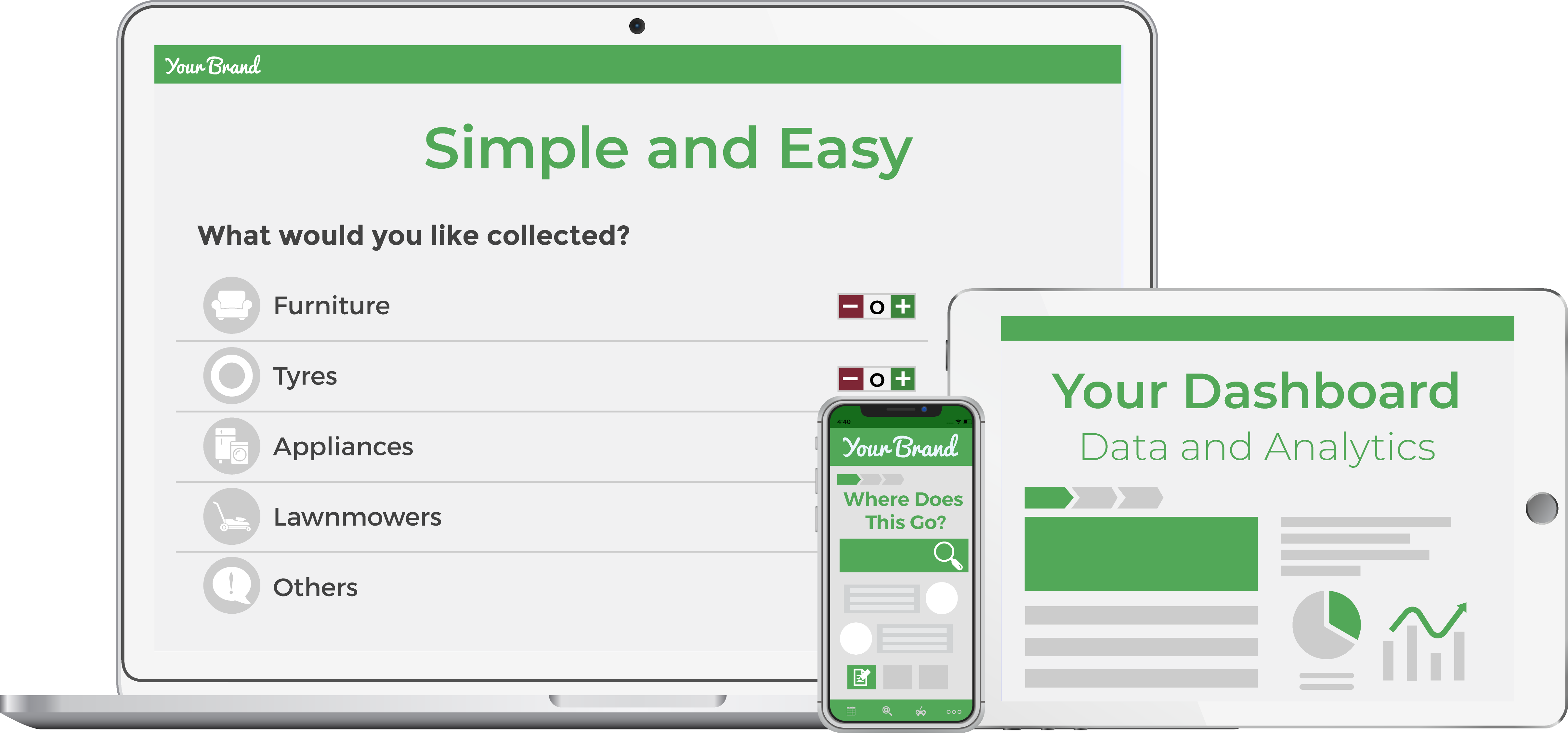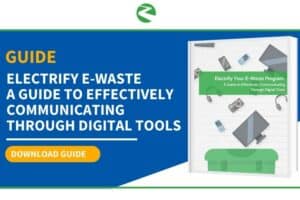From smartwatches to laptops, electronics that were once luxuries are now everyday necessities. Which also means they’ve become everyday trash. The world is producing up to some 55 million tons of electronic and electrical waste every year. This solid waste, commonly known as e-waste, weighs more than all of the commercial airliners ever made — and yet only 20 percent of it is formally recycled, according to a United Nations report. Electronics contain a variety of hazardous, potentially valuable and recyclable materials, and while some of their components may technically be disposed of in the rubbish, it is obviously better to recycle them. While long-term solutions to e-waste issues will require collaboration across industry and government sectors, developing responsible programs — and implementing effective, digital messaging about those solutions — is one way you can make a difference now.
Craft a Plan
If you’re tasked with creating new messaging and communication strategies for your e-waste program, you’ll first want to develop a program overview.
Do what you can
You can only collect and spread the word about the materials your program is able to process, so start your research and information gathering here.
Break it down
Estimate the volume of materials your program will yield. Which processor(s) in your region can handle that volume and material types? Collection methods. The materials you accept and their processing location can help you determine the collection method you use.
Closing the circle
Create a plan that directly benefits your community. You could sell refurbished electronics at a reduced rate, offer incentives such as swag bags to recycle e-waste in the first place, and more.
Communicating your E-Waste Program
Launching or reviving communication strategies and campaigns for e-waste programs — and solid waste programs in general — can be daunting, to be sure. But we know from experience that as long as the program’s operations are up and running smoothly, program coordinators and recycling educators alike can ensure program success through adopting seven best practices for effectively communicating about your e-waste program.
1. Plan, plan, plan.
Effective communication with the people who use your program will allow you to meet your goals for diversion, positively impact the environment and more. This all starts with a practical and detailed plan to introduce people to your program and keep them engaged.
2. Lean on local.
Spread the word about your e-waste program through local news media and non-profit organisations to reinvigorate interest in your program while reaching the most amount of people.
3. Connect and collect.
Spread the word about your e-waste program and connect with the people you serve through a collection event.
4. Take advantage of all platforms.
Enlisting a variety of platforms to spread the word about your program will help you meet people wherever they are to tell them about the program, its benefits, and how they can get involved.
5. Maximize your website.
Make your website a one-stop hub for your e-waste program and others with easy-to-navigate pages, digital tools and more.
6. Elevate your educational efforts with digital tools.
Because the ways in which people seek information has changed, the methods in which you deliver recycling education must evolve, too.
Here are just a few digital tools from ReCollect to consider:

Collection Calendar:
This displays your kerb-side collection calendar in a digital format. It eliminates the need for printed calendars, lowers your call volumes and more.
Waste Sorting Game:
This game helps you test people’s recycling knowledge in a fun, interactive, easy and resource-friendly way. Learn what items people are commonly getting wrong so you can employ targeted communications instead of guesswork to generate your recycling education.
Waste Wizard:
This tool helps people quickly learn which item goes in which bin through a simple search. 7. Set yourself apart. The future of waste and recycling communications is digital.
Maximize your messaging and campaigns efforts now by focusing on digital communications so you can meet people where they search. Learn more Want to learn more about how you can successfully digitally communicate your e-waste program? Download our guide today.
To download the E-Guide please click HERE
Source:
ReCollect | A Routeware Company





